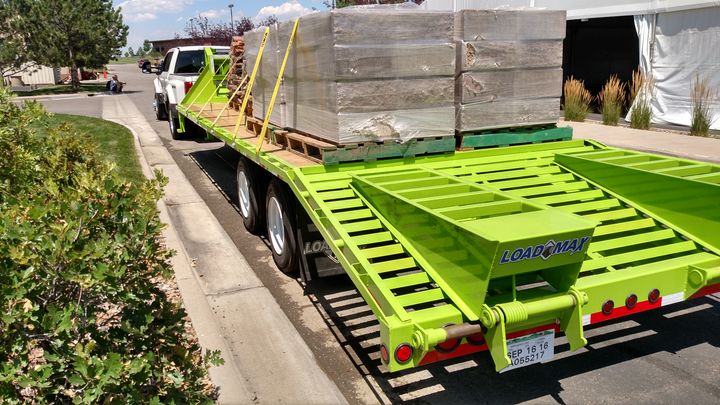Understanding Working Load Limit When Securing a Load
Tie-down straps should be properly employed and of decent quality with their working load limits, or WLLs, affixed to the material or on tags. Never use torn or frayed straps.
There once was a small industrial service company that wasn’t well run. Its employees cleaned electrical equipment in confined quarters with strong solvents and sometimes wore respirators – it was that sort of outfit.
One day a worker loaded some gear into a pickup truck and took off down a freeway. Among the items in the bed was a long step ladder that the guy hadn’t bothered to tie down. Wind blew the ladder out of the truck and it went through the windshield of a following car, killing its driver, who happened to be a middle-aged physician. Aside from the human tragedy, imagine the monetary settlement on that incident. And the negligent employee wasn’t particularly remorseful over it.
It simply makes sense to secure anything that’s loaded into a truck or onto a trailer so it stays put. Ropes work, but unless you’re an ex-sailor or Boy Scout who mastered the art of tying knots, that square knot you fumbled with might or might not keep the rope taut and the item in place. Wind from road speed is one thing, but sharp turns and sudden stops can exert even more force on an object, causing it to shift and perhaps depart like an errant missile from your conveyance.
Instead, use decent-quality straps or, in some cases, strong chains. Straps can be had with ratchets or cam buckles. Both let you tighten the strapping; a cam buckle is quicker but the ratchet lets you put some serious tension on the strap. If the strapping is of stout nylon or similar material, it won’t stretch or break.
Do not use a frayed strap because it’ll probably break under stress and a motor carrier inspector will treat it like it’s not there. In general, the thicker and wider the material, the stronger the strap is, but you never know unless the strapping is labeled with a rating.
Working Load Limit
What you’re looking for is a working load limit, or WLL. It will appear in pounds or kilograms or both, and should be printed, stamped, or embossed on the strap and/or a label that’s firmly attached. That rating must be visible and readable for your convenience and peace of mind, and to satisfy any curious law enforcement officer.
Federal regulations (which might or might not apply to your operation) require the total ratings of all the straps you’ve used to be at least half the weight of the load you’re carrying. That goes for chains, which also carry industry-standard ratings, and yes, none should have any weak links. Most carriers use 3/8-inch chain.
The federal rules also specify how many straps should be employed for the load’s length. For things like lumber, you need two straps in the first 10 feet of a load, and one for every 10 feet thereafter. Multiple items should be individually strapped, with lower load tiers secured first, then the uppers. If you’re hauling a backhoe or some such on a trailer, each corner should be secured by an approved chain. Some cargoes need to be protected from shifting, and that can be done with braces, blocks, void fillers or friction mats.
If a van is loaded right to the walls, then cargo shouldn’t move unless the walls flex or break in a wreck. Then you’ve got a mess on your hands.
by Tom Berg
Source: https://www.automotive-fleet.com/
FLEET MANAGEMENT AUDIT
Fleet management is the use of a set of vehicles in order to provide services to a third-party, or to perform a task for our organization, in the most efficient and productive manner with a determined level of service and cost.
Fleet management activities are shown in the following graph 1:

Graph 1: fleet management activities
The proposal audit analyses and assesses all fleet management activities shown in the graph 1, and its main goals are:
- Know the overall status of the fleet management activities
- Provide the analysis, the assessment, the advice, the suggestions and the actions to take in order to cut costs and increase the efficiency and efficacy of the fleet management activities
With the information obtained, we’ll elaborate a report that holds the overall status of the fleet management as well as the suggestions, recommendations and the measures to take in order to cut costs and optimize the fleet management activities.
CLICK ON THE FOLLOWING LINK TO DOWNLOAD THE PROPOSED FLEET MANAGEMENT AUDIT:



